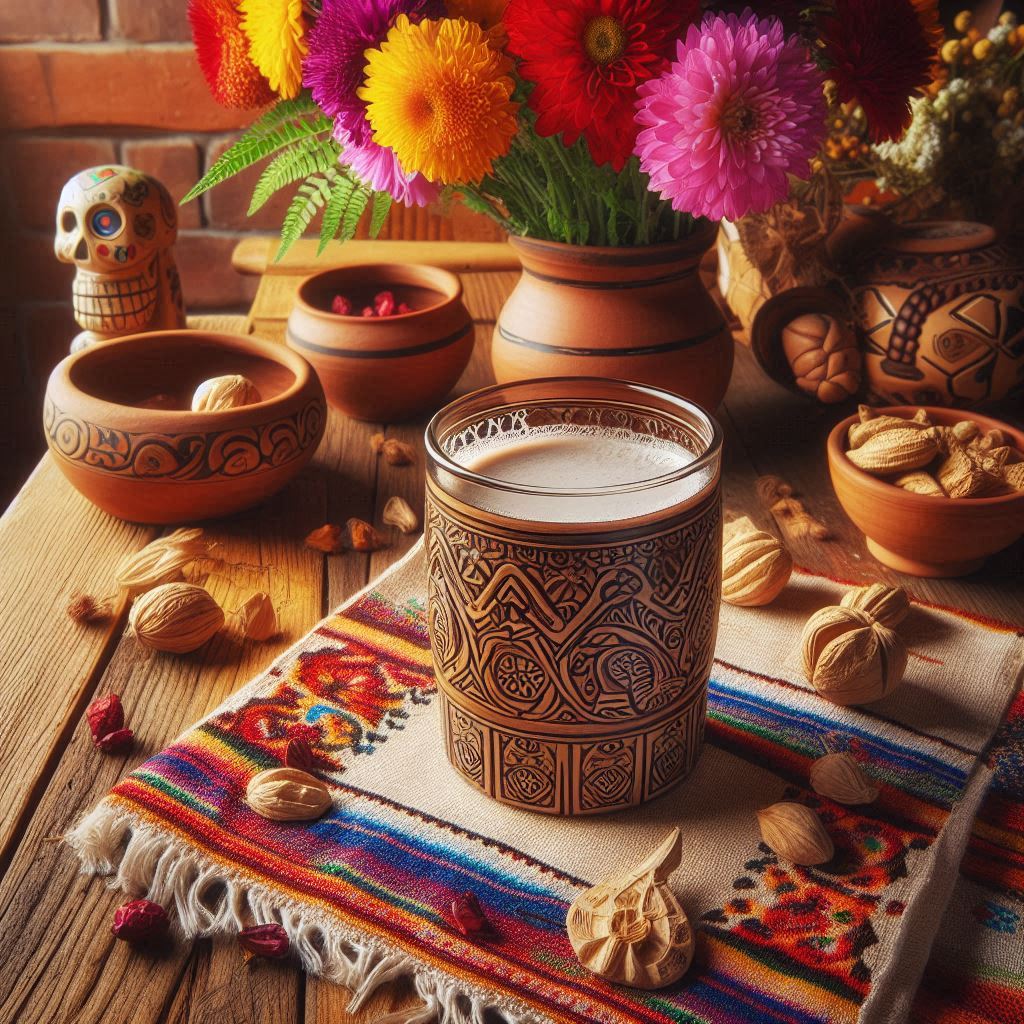Pulque: drink of the gods
Pulque, often hailed as the “drink of the gods,” is a traditional alcoholic beverage with roots stretching back thousands of years in Mexico. Made from the fermented sap of the maguey (agave) plant, pulque is far more than a simple drink—it’s a living symbol of indigenous heritage, spiritual significance, and Mexican cultural resilience. This unique beverage has survived pre-Hispanic rituals, colonial suppression, and modern challenges to re-emerge as a beloved cultural icon.
What exactly is pulque?
Pulque is a milky, somewhat viscous beverage, lightly effervescent with a slightly sour, yeasty flavor. Its alcohol content typically ranges from 2 to 8%, roughly comparable to beer. Unlike tequila or mezcal, which are distilled from agave, pulque is a fermented drink made directly from aguamiel— the sweet, milky sap extracted from the heart of mature maguey plants.
The fermentation process gives pulque its characteristic texture and tang, which some compare to a cross between kefir and kombucha. The flavor can be somewhat earthy and acquired, but also deeply refreshing. Pulque can be consumed in its natural form or as “curado,” where fruits, nuts, seeds, or even chili are blended into the drink, softening its tartness and creating a range of delicious, traditional varieties such as strawberry, pineapple, or even oatmeal pulque.
The ancient origins of pulque
The origins of pulque trace back to ancient Mesoamerican civilizations, with archaeological evidence suggesting its production and consumption as early as 200 BCE. Pulque was deeply woven into the religious and social fabric of the region. The Aztecs, in particular, revered pulque as a sacred gift from Mayahuel, the goddess of maguey, and its consumption was surrounded by strict social rules—reserved primarily for priests, warriors, and nobles. Commoners were restricted in how much they could drink, and excessive consumption was frowned upon.
Pre-Hispanic murals and codices depict scenes of pulque being enjoyed during ceremonies, illustrating its importance as both a communal and spiritual beverage. It was believed that pulque could impart divine blessings, fertility, and protection, making it central to many rituals.
The colonial era and pulque’s struggles
With the Spanish conquest of the Aztec Empire in the early 16th century, pulque’s place in society shifted dramatically. The Spanish initially attempted to suppress indigenous beverages like pulque due to its association with pagan rituals. However, pulque’s popularity among the native population ensured its survival.
Interestingly, the colonial authorities imposed taxes on pulque production, recognizing it as a significant economic resource. By the 18th century, pulque had become a vital industry in central Mexico, particularly in the states of Hidalgo, Tlaxcala, and Puebla, where large haciendas specialized in cultivating maguey plants and producing pulque on a commercial scale.
Despite this economic importance, pulque was often stigmatized by elites and in the 19th century, beer began to compete with it aggressively. Marketing campaigns sought to cast pulque as an unhealthy and unsophisticated drink, hoping to replace it with beer among the growing urban middle class.
Pulque in modern Mexico: revival and reinvention
The 20th century saw pulque’s popularity decline as industrialized beer production expanded and urban tastes changed. Yet, the 1990s and early 2000s marked a vibrant resurgence of interest in pulque, driven by cultural pride and the craft beverage movement.
Today, pulque enjoys a renewed appreciation among younger generations and tourists alike, especially in Mexico City and surrounding central states. Pulquerías—traditional pulque bars—have experienced a renaissance, blending rustic charm with contemporary flair. Some pulquerías are dedicated to showcasing the beverage’s vast range of flavors, while others emphasize its deep cultural roots through murals, live music, and storytelling.
Places like Pulquería Las Duelistas and La Hija de los Apaches in Mexico City serve pulque in flavors ranging from classic natural to creative curados featuring fruits like guava, mango, or celery. Many pulquerías prioritize sourcing fresh aguamiel daily from rural maguey plantations to maintain authenticity and quality.
How the beverage is made: from maguey to mug
The production begins with the maguey plant, a slow-growing species that takes between 8 and 15 years to mature. When ready, the plant’s flowering stalk (quiote) is removed to encourage the accumulation of aguamiel in the heart (piña). Skilled pulqueros (pulque makers) scrape out the sap several times a day, collecting it in containers.
This sap, rich in sugars and nutrients, ferments naturally thanks to native yeasts and bacteria. The fermentation takes place in large barrels or vats, often wooden or clay, and is surprisingly rapid—transforming aguamiel into ready product in just a few hours. Due to this freshness requirement, the beverage is usually consumed locally and is rarely bottled or exported, lending the beverage an intimate connection to its place of origin.
The cultural significance of pulque
Beyond its role as a beverage, pulque represents centuries of Mexican history, resilience, and identity. It has endured bans, stigma, and modernization attempts, yet it remains a powerful symbol of indigenous tradition and rural heritage. Pulque’s continued popularity serves as a reminder of Mexico’s rich pre-Columbian past and the ongoing celebration of cultural diversity.
For locals, drinking pulque is a communal activity that fosters connection, memory, and pride. For visitors, trying pulque is an immersive cultural experience—a taste of living history.
Final thoughts: why you should try this beverage
If you find yourself wandering the streets of Mexico City or the maguey-rich valleys of central Mexico, visiting a pulquería and savoring a glass of pulque should be on your must-do list. It’s not just a drink—it’s an invitation to step into a story that spans millennia, a shared ritual that honors the gods, the earth, and the people who have crafted this drink through generations.
Pulque is a testament to Mexico’s enduring spirit, a milky, frothy sip of history, culture, and community that invites everyone to raise a glass—to the past, present, and future of the land of maguey.

